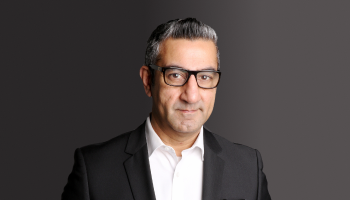Ten important questions investors should ask as resource companies pursue the necessary materials for a sustainable future
Improving due diligence
In their 2021 Renewable Energy & Human Rights benchmark the Business and Human Rights Center analyzed 15 of the world’s biggest global renewable energy companies. Despite some modest year-over-year improvements, the entire sector continues to underperform on human rights due diligence. The average benchmark score was 28% with the lowest scores stemming from the sector’s highest-risk areas – respect for land rights, Indigenous peoples’ rights, and protections for human rights defenders.
Respectful and equitable relationships
For responsible investors, obtaining and maintaining FPIC is considered essential. We expect companies to commit to obtain and maintain FPIC and in so doing mitigate risks to both people and businesses. FPIC can also simultaneously establish new opportunities for mutual benefit that otherwise might not be realized. In Canada, one of the most direct paths to achieving this objective is through facilitating Indigenous equity stakes in projects. Indigenous ownership can lay the foundation for more formal inclusion that ensures Indigenous perspectives are incorporated into leadership decision-making. Such collaboration can lead to significant benefits including but not limited to:
- Enhanced environmental protections through more formal processes for integrating Indigenous Traditional Knowledge for land stewardship
- Development of Indigenous own-source revenues
- Improved social outcomes for Indigenous communities
Implementing a new industry standard for resource development that is based on FPIC ensures respectful and equitable relationships with First Peoples that can benefit all Canadians, who after all, are reliant on the success of renewable energy and mining initiatives for a successful transition to a low- or no-carbon future. Equitable partnerships will significantly reduce legal risk, while increasing project certainty and overall progress toward sustainable energy infrastructure.
For responsible investors, obtaining and maintaining FPIC is considered essential.
Actions over words
Although the Renewable Energy & Human Rights benchmark found that most companies in the global sector have in place existing commitments to FPIC, policy commitments do not always extend into practices on the ground. Rio Tinto demonstrated this in 2020 when they destroyed a 46,000-year-old Aboriginal cultural heritage site at Juukan Gorge in Australia to develop an iron ore mine. To help eliminate such Indigenous rights abuses, investors need to have a better understanding of the underlying practices and indicators of strong FPIC and human rights due diligence generally.
...policy commitments do not always extend into practices on the ground.
What investors should ask
To understand how robust their public commitments to respecting Indigenous rights are in practice, there are 10 questions investors can ask renewable energy and mineral extraction investee companies:
- How are Indigenous rights factored into the strategic business model and overall enterprise risk?
- What steps are being made to facilitate and enable Indigenous equity ownership or other benefits in land-use projects?
- What is the company’s explicit strategy for obtaining and maintaining FPIC for business activities that impact rights holders?
- What is the chain of accountability up through the executive officers and board directors for ensuring effective implementation of FPIC principles?
- What type of human-rights expertise or Indigenous-rights expertise is the board and senior management leveraging to inform the company’s approach?
- What is the company’s contingency plan if FPIC hasn’t been granted?
- What does the company define as consent, and with whom has consent been secured; are there any groups that have not consented and what is the approach to remedying this lack of consent?
- Is the company able to provide transparency into contracts with Indigenous communities or disclose them in full, and if not, why?
- Have rights-holders and other stakeholders been involved in the design and implementation of grievance mechanisms and other processes to help prevent and mitigate adverse impacts from business activities?
- How does the company work with the local authorities to respect Indigenous rights when lands are not officially titled to the local Indigenous groups?
Listen and learn
Indigenous peoples are as diverse as any population group with differences of opinion about what is in their best interest arising from both within and between communities. With any best practice related to minimizing harm to affected people, what constitutes robust FPIC and a good relationship with Indigenous communities should be informed by what Indigenous communities themselves identify as being best practice. Effective engagement with locally affected rights holders to understand context specific protocols, interests and concerns is the foundation for respecting Indigenous rights.
Interested in learning more? For further reading, we recommend:
Disclaimers:
This article is for information purposes. The information contained herein is not, and should not be construed as, investment or legal advice to any party.
BMO Global Asset Management is a brand name under which BMO Asset Management Inc. and BMO Investments Inc. operate.
®/™Registered trademarks/trademark of Bank of Montreal, used under licence.





